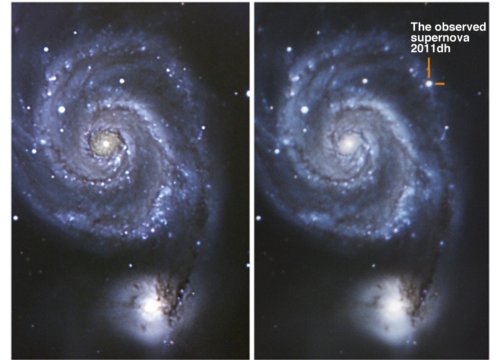
AsianScientist (May 19, 2016) – By using the Fiber Multi-Object Spectrograph (FMOS) on the Subaru Telescope in Hawaii, an international team has made a 3D map of 3,000 galaxies 13 billion light years from Earth. Based on this comprehensive survey, the team was able to confirm that Einstein’s general theory of relativity is still valid. Their findings were published in Publications of the Astronomical Society of Japan.
Since it was discovered in the late 1990s that the universe is expanding at an accelerated rate, scientists have been trying to explain why. The mysterious dark energy could be driving acceleration, or Einstein’s theory of general relativity, which says gravity warps space and time, could be breaking down.
The researchers, led by researcher Mr. Teppei Okumura and Assistant Professor Chiaki Hikage from Kavli IPMU and Professor Tomonori Totani from the University of Tokyo, used FastSound Survey data on more than 3,000 distant galaxies to analyze their velocities and clustering. This survey is one of the strategic observation programs at the Subaru Telescope, and used 40 nights’ worth of its telescope time from 2012 to 2014.
Their results indicate that even deep into the universe, general relativity is valid—giving further evidence that the expansion of the universe could be explained by a cosmological constant, as proposed by Einstein in his theory of general relativity.
“We tested the theory of general relativity further than anyone else ever has. It’s a privilege to be able to publish our results 100 years after Einstein proposed his theory,” said Okumura.
Previously, no one had been able to analyze galaxies more than ten billion light years away. However, thanks to the FMOS on the Subaru Telescope, which can analyze galaxies 12.4 to 14.7 billion light years away, the team managed to break this barrier. The Prime Focus Spectrograph, currently under construction, is expected to be able to study galaxies even further away.
“Having started this project 12 years ago, it gives me great pleasure to finally see this result come out,” said Professor Karl Glazebrook from the Swinburne University of Technology in Australia, who proposed the survey.
The article can be found at: Okumura et al. (2016) The Subaru FMOS Galaxy Redshift Survey (FastSound). IV. New Constraint on Gravity Theory from Redshift Space Distortions at z ~ 1.4.
———
Source: Subaru Telescope.
Disclaimer: This article does not necessarily reflect the views of AsianScientist or its staff.












